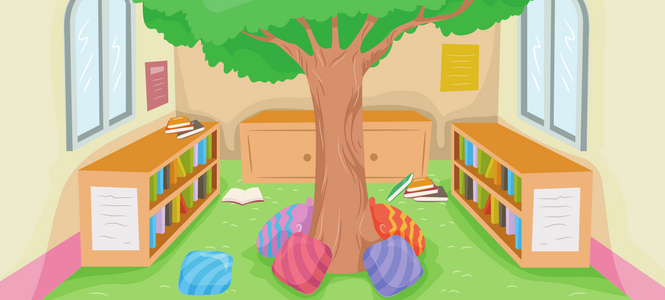Being a pre-service or early career primary school teacher can be a daunting time. Your tasks go far beyond giving your students an enriching and inspiring education, an already complex and demanding challenge. Reading Australia creates resources that make teaching literacy easy for primary teachers. But there are other areas you might need support in: today we’d like to discuss our tips for new teachers on how to build a classroom library.
Rome wasn’t built in a day and your classroom library won’t be either. Classroom libraries are living things, always growing, always changing. If you accept that the perfect book collection will take a bit of time and some planning ahead, then you’re ready to get started! Begin your build-a-library journey with our tips below.
Selecting the books
The first step in creating the perfect classroom library is filling the shelves with the right kinds of books…
Fill it with the kinds of books students want to read. None of your students are going to go near the library unless there are books there that will interest them. But how do you find out what books your students like to read? Ask them. Make the classroom library project one your students can be a part of. Have a class discussion about favourite genres, make a list of your student’s most-read authors, or host a ‘Bring Your Favourite Book to School’ day.
Fill it with the kinds of books students should read. A library is a source of information – it’s where students learn to research, and where they can learn about the world. It should represent all areas of the curriculum, so be sure to include books about maths, science, geography, history, and other topics.
Fill it with Aussie books! Many authors have spoken about the importance of Australian kids seeing themselves represented in books, as well as learning about how others imagine what it means to be Australian. Include books set in both cities and regional locations, books by multicultural and diverse voices, and books that feature strong girl protagonists.
Everything in moderation. A balanced library is one that has Australian books, books by international authors, different genres and different reading levels. Students in primary school are still figuring out their reading tastes – give them as much variety as possible to help them discover new favourites.
Creating a book space
Create a designated book space. Make the classroom library a sought after destination by clearly differentiating it from the rest of the classroom. Next, turn the library corner into a place students want to explore and spend time in. Coloured rugs, comfortable places to sit and read, interesting displays will all contribute to raising interest.
Get organised! Maybe you already have the right kinds of books, but it’s too difficult for the students to find new favourites? Use display shelves that feature the book of the week, introduce book boxes with labels, and set aside time to show students how to return books when they’re finished with them.
Constantly change it up. Changing things up means the library always feels new. Regularly change the featured titles on the recommended shelf. Use the library space to celebrate special events, like Book Week. When you study a particular subject, like the water cycle or Federation, turn the library space into a visual exploration of that topic.
Creating a book culture
According to the Reading Hour, ‘reading for pleasure is the most important indicator of the future success of a child, more important even than their
family’s socioeconomic status.’ Teachers are essential in shaping the way students think about reading and books.
Make reading a part of everyday. Create the time for daily silent reading; encourage group discussions where students get the chance to talk about books; reward good behaviour with reading time, demonstrating how valuable this activity is.
Invite writers to visit your classroom. Special guests like writers and illustrators are a wonderful way for students to connect directly with the creators behind their favourite books. Workshops conducted by writers or illustrators can inspire young people to create their own stories.
One last tip: speak with your colleagues and find out how they approach the task of building or maintaining their own class libraries.
And there you have it, everything you need to start building your classroom library and start turning your students into readers for life. We would love to hear from early career and experienced teachers who have their own tips – send them to readingaustralia@copyright.com.au and we’ll share our favourites with the Reading Australia community.

